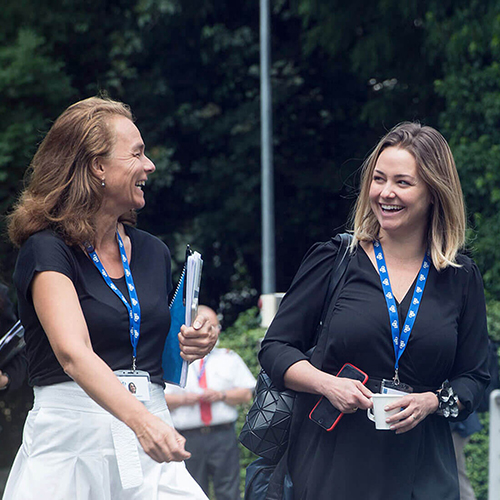
6 things your inner child can do for you
Discover how reconnecting with your inner child can boost creativity, resilience, and courage, turning curiosity into professional strengths....

by Ina Toegel Published March 17, 2021 in Team building • 4 min read
Team performance can often be the underlying cause of success or failure within a business unit. It’s not just the bottom line that is affected by a team’s dynamics either. Overall morale, employee retention and corporate culture are heavily influenced by the way an organization’s teams are formed and collaborate.
Top teams don’t happen by accident. There are certain factors that high-performance teams have in common, and leaders have tools they can use to affect the quality of collaboration within the group.
The most effective leaders in todays’ corporations are those who empower their team and who are able to focus on the relationships between people and their dynamics in the team. A healthy team dynamic is crucial to high performance: it allows teams to make effective use of their time, to be truly engaged creatively, and therefore – to find optimal solutions to problems. How do effective leaders enhance team members’ self-awareness and awareness of the team’s dynamics?
1. Feedback culture – One of the greatest challenges in providing others with feedback is that it often feels unsolicited – the recipient hasn’t really asked for it, and the consequence is twofold: A) we feel uncomfortable sharing it and B) the recipient is defensive. When teams institute regular weekly or monthly feedback sessions, members become more skilled at formulating and receiving feedback.
2. Team check-in and check-out – High-performance teams begin and end their meetings with a discussion about their relationships. A “check-in” is a short sharing of feelings, with each member sharing positive or negative sentiments like “I worry about this deal because…”, “I was anxious last week because…”, “I feel relieved because…”. A “check-out” might revolve around questions like “How satisfied are we with this meeting?”, “To what extent did we listen to each other?”, “To what extent did we resolve the tensions in the room.” It is the team leader’s task to role model that it is safe to share such sentiments, as long as they are constructively phrased. Both the check-in and the check-out provide an opportunity for team members to share positive emotions or unburden some frustrations. When negative emotions are not verbalized, they tend to build up and therefore magnify tensions in a team and decrease productivity.
Paying attention to relationships in a team is not only important for productivity and efficiency, but for innovation as well. Studies suggest that teams that focus on relationships have an important crucial ingredient called “psychological safety” (Edmondson, 2008). It reflects the notion that team members feel safe and supported by the team, are not afraid of making a mistake, and feel greater freedom to experiment. Psychological safety makes the difference between traditional efficiency-focused organizations and more innovative learning-focused companies.

A prominent example of a company that focuses on the importance of psychological safety is Google. After much internal research and data gathering, Google (with the help of social scientists and anthropologists) established that their best performing teams have one thing in common – team leaders who recognize the importance of psychological safety and who role model to their team how to open up and disclose vulnerability. In one particular case, a team leader even shared his personal story of cancer in order to set an example that emotional conversations are not only allowed, but also encouraged in the team. Such conversations enhance the empathy and engagement in the team and ultimately have a positive effect on the bottom line.
In summary, when composing high-performance teams, leaders must pay attention to team size and to ensuring a diversity of thought and perspectives. Leading teams to high-performance requires open conversations about the relationships inside the team – how are we all similar; how are we all different; and how are these differences and similarities manifested in our collaboration? Such conversations are important for creating a feedback culture, but ultimately also result in team agility by ensuring a safe space for failing, learning, and therefore – innovating.

Professor of Leadership and Organizational Change at IMD
Ina Toegel’s research focuses on team dynamics, organizational change management, top management teams during corporate renewal, and founder influence. She directs the Leading High-Performance Teams program which supports executives in achieving team flow and transforming a group of individuals into a high-performing dream team.


November 11, 2025 • by Francesca-Giulia Mereu in Team building
Discover how reconnecting with your inner child can boost creativity, resilience, and courage, turning curiosity into professional strengths....

October 23, 2025 • by Jackie Cooper in Team building
Leaders should challenge their assumptions about digital natives to build more meaningful connections....
 Audio available
Audio available
October 2, 2025 • by Bülent Gögdün in Team building
In the face of burnout, quiet quitting, and workplace complexity, happiness is one often overlooked factor that can transform leadership resilience and team performance....
 Audio available
Audio available
October 1, 2025 • by Konstantinos Trantopoulos in Team building
What do NBA champions have in common? Five winning traits - from depth to culture - that offer powerful lessons for building high-performing organizations....
Explore first person business intelligence from top minds curated for a global executive audience